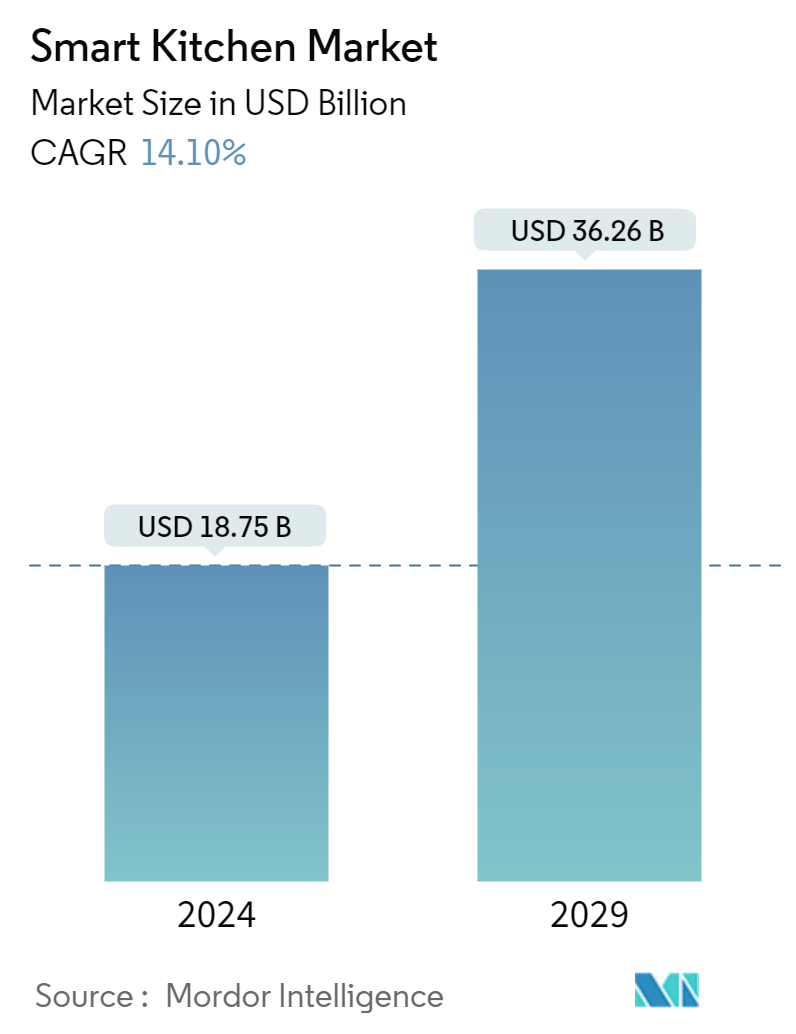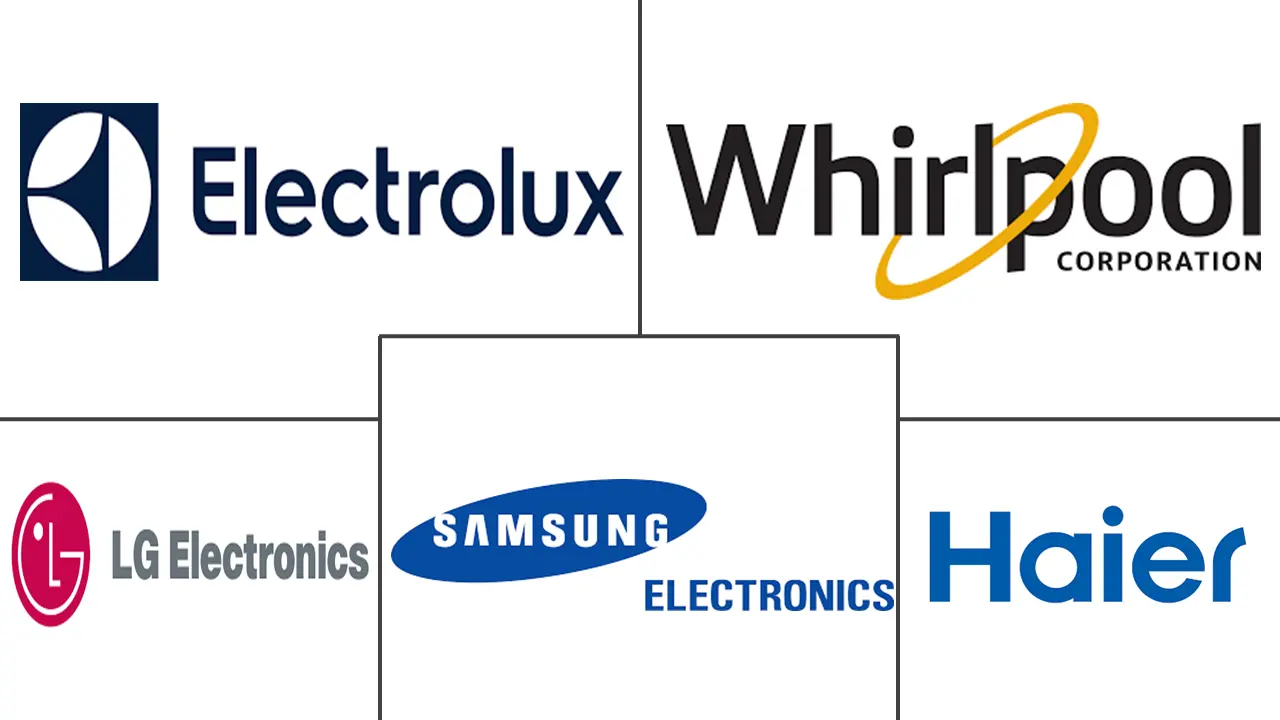Market Size of Smart Kitchen Industry

| Study Period | 2019 - 2029 |
| Market Size (2024) | USD 18.75 Billion |
| Market Size (2029) | USD 36.26 Billion |
| CAGR (2024 - 2029) | 14.10 % |
| Fastest Growing Market | Asia Pacific |
| Largest Market | North America |
| Market Concentration | Low |
Major Players
*Disclaimer: Major Players sorted in no particular order |
Smart Kitchen Market Analysis
The Smart Kitchen Market size is estimated at USD 18.75 billion in 2024, and is expected to reach USD 36.26 billion by 2029, growing at a CAGR of 14.10% during the forecast period (2024-2029).
- Smart kitchen appliances and devices prioritize energy efficiency, outpacing their traditional counterparts. With features like smart sensors, energy-efficient compressors, and advanced power management systems, these appliances not only optimize energy usage but also contribute to reduced electricity bills and a diminished carbon footprint. As awareness grows, both consumers and businesses are actively pursuing these energy-efficient solutions to lessen their environmental impact.
- Many smart kitchen solutions are equipped with features that promote responsible waste separation and disposal. These innovations, such as smart trash cans with automated sorting and connections to municipal waste management systems, actively encourage users to recycle and manage kitchen waste responsibly.
- Government regulations and policies in certain regions are promoting the use of energy-efficient and eco-friendly kitchen appliances, boosting the demand for smart kitchen solutions. Over the next three years, the Bureau of Energy Efficiency (BEE) plans to mandate energy labeling for products like LPG stoves, microwave ovens, and induction hobs, which were previously voluntary. According to the BEE’s impact assessment report, energy efficiency measures led to substantial consumer savings of INR 54,323 crore (~USD 6.6 billion) in the fiscal year 2022-23.
- As urban areas become increasingly populated, the global trend of rapid urbanization is driving the demand for smart kitchen solutions. Urban dwellers, being diverse and health-conscious, are turning to smart kitchen technologies. These technologies offer personalized recipe recommendations, track ingredients, and automate cooking, catering to specialized dietary needs. Consequently, solutions that assist with meal planning, ingredient management, and customized cooking are witnessing heightened interest in urban locales.
- The intricate electronic components, sensors, and connectivity features of smart kitchen appliances often come with high repair or replacement costs. Moreover, specialized replacement parts for these devices might not only be scarce but also pricier than their standard counterparts. Such factors contribute to elevated maintenance expenses, potentially deterring consumers wary of the long-term financial commitment of owning and maintaining smart kitchen appliances.
- The fluctuating inflation rate escalates the costs associated with raw materials, components, and manufacturing processes for smart kitchen appliances and devices. As production costs surge, manufacturers find themselves under pressure, often compelled to transfer these increased expenses to consumers through price hikes. Similarly, retailers grapple with heightened procurement and operational costs, which could either inflate prices for consumers or squeeze profit margins.

